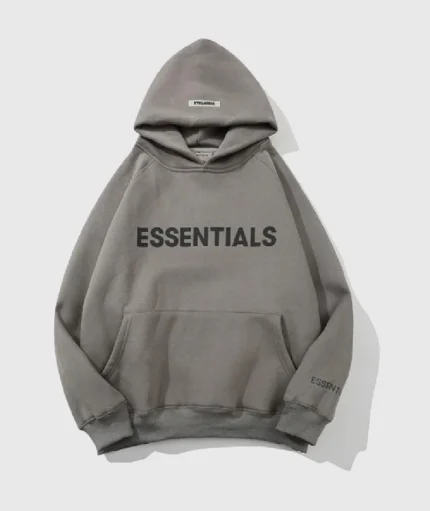What You Need to Know About Wrestling Singlet Regulations
In the world of wrestling, the singlet is more than just a piece of clothing—it’s a symbol of the sport’s rich traditions and a key component of competitive fairness. Whether you’re a seasoned wrestler or a dedicated coach, understanding the regulations that govern wrestling singlets is crucial for maintaining a professional and competitive edge on the mat.
This comprehensive guide delves into the intricacies of wrestling singlets regulations, offering a detailed look at everything from color restrictions to fabric requirements and allowed styles. We’ll also explore the pitfalls of illegal modifications, the importance of the inspection process, and provide answers to some of the most frequently asked questions. By the end, you’ll be equipped with the knowledge to ensure that your singlet not only meets the standards but also reflects the spirit of the sport.
Wrestling singlet color regulations
When it comes to wrestling singlets, color plays a crucial role in maintaining a uniform and professional appearance on the mat. The regulations governing singlet colors are designed to ensure fairness and consistency across all levels of competition. One of the primary rules is that singlets must be solid colors only. This means no patterns, designs, or multi-colored motifs are allowed. The use of solid colors helps to create a cohesive look among wrestlers and prevents any visual distractions that could potentially give one wrestler an unfair advantage.
In addition to the solid color requirement, singlets must also align with the team’s official colors. This ensures that each wrestler represents their team in a unified manner, enhancing team spirit and making it easier for referees and spectators to identify competitors. It’s important for coaches and wrestlers to coordinate with their team to select singlets that match the approved team colors, avoiding any deviations that could lead to penalties or disqualifications.
Another critical aspect of singlet color regulations pertains to light-colored or white singlets. While these are generally acceptable, there may be instances where a colored shirt is required to be worn underneath. This is to ensure that the singlet does not become transparent or translucent, which could compromise the wrestler’s modesty and professional appearance. The requirement for a colored shirt is often determined by the governing body of the competition, so it’s essential to check the specific rules for each event.
Lastly, singlets must be opaque at all times. Transparent or translucent fabrics are strictly prohibited, as they can reveal too much of the wrestler’s body and are not in line with the sport’s standards of modesty and professionalism. Ensuring that the singlet is made from a high-quality, non-transparent material is crucial for adhering to these regulations and maintaining a respectful appearance on the mat.
By following these color regulations, wrestlers and coaches can ensure that their singlets not only meet the required standards but also contribute to a fair and professional atmosphere in the world of wrestling.
Singlet fabric requirements
To maintain safety and appropriateness in wrestling competitions, the fabric of wrestling singlets must meet stringent standards. These standards are crucial for ensuring consistency among all participants, thereby fostering fairness and comfort. The fabric chosen not only affects the appearance but also influences performance, durability, and the overall experience of the athlete.
Singlets must be made from approved fabric types, which typically include Lycra, spandex, or other similarly flexible materials. These fabrics are chosen for their ability to provide a snug fit without restricting movement, a vital aspect for the high-energy, dynamic sport of wrestling. Additionally, singlets must meet a minimum weight requirement to ensure they can withstand the rigors of competition without tearing or ripping, though the specific weight may vary.
The opacity and smoothness of the fabric are also essential factors. Singlets must remain opaque at all times to uphold modesty and professionalism; any transparent or translucent materials are strictly prohibited and can result in disqualification. The fabric must also have a smooth texture to prevent any discomfort or skin irritation during matches, as rough or textured materials can aggravate such issues under the intense physical conditions of wrestling.
It is equally important to avoid chemical treatments that could cause skin irritation. Wrestling involves close physical contact, and any chemicals on the fabric could exacerbate skin problems or allergies. Ensuring that the fabric is free from harmful chemicals is not just a matter of comfort but also a concern for the health and safety of the wrestlers.
Compliance with these fabric specifications is essential for both wrestlers and coaches. This ensures that singlets meet the regulations and provide the necessary comfort and durability during competitions. By choosing the right fabrics, wrestlers can focus entirely on their performance without being distracted by concerns about the quality of their attire.
Allowed singlet styles
Wrestling attire, specifically singlets, adheres to meticulous standards to uphold uniformity and professionalism across the sport. Governing regulations outline approved designs and decorative elements, ensuring all stylistic choices meet these criteria. Usually, singlets comprise top and bottom sections, both of which must align with the team’s official color scheme. This not only cultivates a sense of unity among team members but also aids in easy recognition during competitive matches.
A notable stylistic element of wrestling singlets is the incorporation of stripes, which can add a dynamic visual appeal. However, stripes must adhere to specific rules. Typically, they are permitted along the sides of the singlet, running vertically from the top to the bottom. These stripes must maintain uniform width and color to preserve a clean and cohesive appearance. The number of stripes is also regulated to avoid overly complex designs that might distract from the competition.
Additionally, trim and piping are allowed on wrestling singlets, providing opportunities for subtle decorative enhancements. Trim can be added to the singlet’s edges, such as around the neckline, armholes, and leg openings. Piping, a narrow fabric band sewn into the seams, can further elevate the singlet’s design. Both trim and piping must align with the team’s official colors and should not be excessively ornate. This ensures the singlet maintains a professional look without becoming a distraction.
The display of school logos, names, and mascots is another vital aspect of wrestling singlet design. These elements are permitted but must follow strict guidelines regarding size and placement. Logos and names should be prominently displayed on the chest or back of the singlet, ensuring they are clearly visible from a distance. The size of these elements is regulated to prevent them from overshadowing the singlet’s design, keeping the focus on the competition rather than the decoration. By adhering to these guidelines, wrestlers can proudly represent their schools while maintaining a professional and unified appearance.
Illegal singlet modifications
In the world of wrestling, adherence to singlet rules is crucial for maintaining fairness and professional conduct. Central to these rules is the prohibition of certain alterations and modifications, intended to prevent unfair advantages and uphold the sport’s integrity.
One of the primary regulations is the exclusion of pockets or additional compartments in singlets, as these could be used to conceal items or provide an unfair advantage during a match. Similarly, materials such as metal or hard plastic are strictly forbidden. These materials can cause injury to opponents, compromising the safety of the wrestlers. Furthermore, wearing extra layers like spandex beneath the singlet is not permitted. This rule ensures that no wrestler gains an edge through improved grip or comfort, thereby preserving an equal playing field for all competitors.
The proper fit of the singlet is another essential aspect of these regulations. Singlets should not be overly loose or baggy, as this can hinder the referee’s ability to accurately assess holds and moves during a match. A poorly fitting singlet can also pose a safety risk, as it might get caught or pulled in ways that could harm the wrestler. Hence, the correct fit is vital for both the safety and fairness of the competition.
These regulations are designed to cultivate a fair and competitive environment while preserving the sport’s professional image. Wrestlers and coaches must be well-informed about these restrictions to avoid any penalties or disqualifications. By adhering to the rules regarding illegal modifications, wrestlers can focus on their performance and contribute to a balanced and equitable atmosphere on the mat.
Singlet uniform inspections
Routine uniform examinations before wrestling matches are vital for maintaining the sport’s integrity, fostering fair competition, and ensuring all athletes start on equal footing. Before each match, referees meticulously inspect each wrestler’s singlet to ensure it aligns with the prescribed guidelines. This process is crucial to identify any unauthorized alterations or damage that might inadvertently give a wrestler an unfair edge. Beyond upholding competitive standards, these checks also guarantee that wrestlers project a unified and professional appearance during their matches.
During the inspection, referees carefully examine the singlets for any indications of banned modifications or wear and tear. They confirm that the singlet is made from approved materials and fits according to the required measurements. The uniform is also checked for any tears, holes, or other signs of damage that could affect its condition. If any compliance issues are identified, the wrestler is given the opportunity to change into an appropriate singlet before the match begins. This allows for timely corrections and helps prevent disqualifications.
If a wrestler fails the inspection, the referee promptly informs them of the specific issues that need to be addressed. The wrestler is then given a reasonable amount of time to change into a singlet that meets all the necessary standards. If the wrestler refuses to comply or cannot find a suitable replacement, they may be disqualified from the match. This strict enforcement of the rules is essential for maintaining competitive fairness and ensuring all participants are held to consistent, high standards.
Wrestlers and coaches should be thoroughly familiar with the inspection process and the consequences of non-compliance. Understanding the purpose and significance of these checks can help prevent any last-minute issues and keep the focus firmly on the sport. By adhering to the singlet uniform regulations, wrestlers contribute to a fair and professional competitive environment, where the outcome is determined by the athletes’ skills and commitment rather than non-standard attire.
Conclusion
In the world of wrestling, adhering to singlet regulations is not merely a matter of compliance; it is a cornerstone of maintaining the sport’s integrity and professionalism. These rules are meticulously crafted to ensure that every wrestler competes on a level playing field, fostering an environment where skill and strategy reign supreme over superficial distractions. By aligning with these guidelines, wrestlers contribute to a visually cohesive and respectful atmosphere, which is essential for both the competitors and the spectators.
Staying informed about updates to singlet regulations is crucial. The governing bodies of wrestling frequently refine these rules to address emerging trends and technological advancements in athletic wear. Wrestlers and coaches must remain vigilant and proactive in seeking the latest information to avoid inadvertent violations. Regularly consulting official resources and attending briefings or workshops can provide the necessary insights to stay ahead of any changes.
Moreover, it is important to acknowledge that these regulations are designed with the best interests of the sport in mind. They aim to prevent unfair advantages, ensure safety, and uphold the dignity of all participants. When in doubt, wrestlers should not hesitate to seek guidance from their coaches, officials, or governing bodies. Open communication and a willingness to learn are key to navigating the complexities of these rules.
Ultimately, adhering to wrestling singlet regulations is about more than just following rules—it is about respecting the tradition and spirit of the sport. By complying with these guidelines, wrestlers not only enhance their own performance but also contribute to the overall experience for everyone involved. Embracing these regulations helps to create a competitive environment that is fair, professional, and enjoyable for all.
FAQs
Where can I find detailed information about wrestling singlet regulations?
Many governing bodies, such as national and international wrestling associations, publish comprehensive guidelines on their websites. These resources often include detailed descriptions of color restrictions, fabric requirements, and allowed styles. Additionally, consulting with experienced coaches or referees can provide valuable insights and clarifications.
What are the consequences if a wrestler’s singlet does not comply with the regulations? Non-compliance with wrestling singlet regulations can lead to various penalties, depending on the governing body’s rules. Common consequences include warnings, point deductions, or even disqualification from a match. It is crucial to ensure that singlets meet all regulatory standards to avoid these penalties and maintain fair competition.
Are there restrictions on the colors of wrestling singlets?
Yes, there are specific color restrictions to maintain a uniform and professional appearance. Singlets must be solid colors with no patterns or multi-colored designs. Light-colored or white singlets are typically acceptable, but a colored shirt may be required underneath to prevent transparency. Always refer to the official regulations for the most accurate and up-to-date information on color restrictions.
What materials are allowed for wrestling singlets?
Wrestling singlets must be made from approved materials that ensure durability, comfort, and safety. Opaque fabrics are mandatory to uphold standards of modesty and professionalism. Transparent or translucent materials are strictly prohibited. Consulting the official guidelines will provide a list of acceptable materials and any specific requirements.
How often are singlet uniform inspections conducted?
The frequency of singlet uniform inspections can vary depending on the competition level and the governing body’s protocols. Inspections are typically conducted before matches to ensure all wrestlers are in compliance with the regulations. It is essential for wrestlers and coaches to be prepared for these inspections and ensure that all aspects of the uniform meet the required standards.






